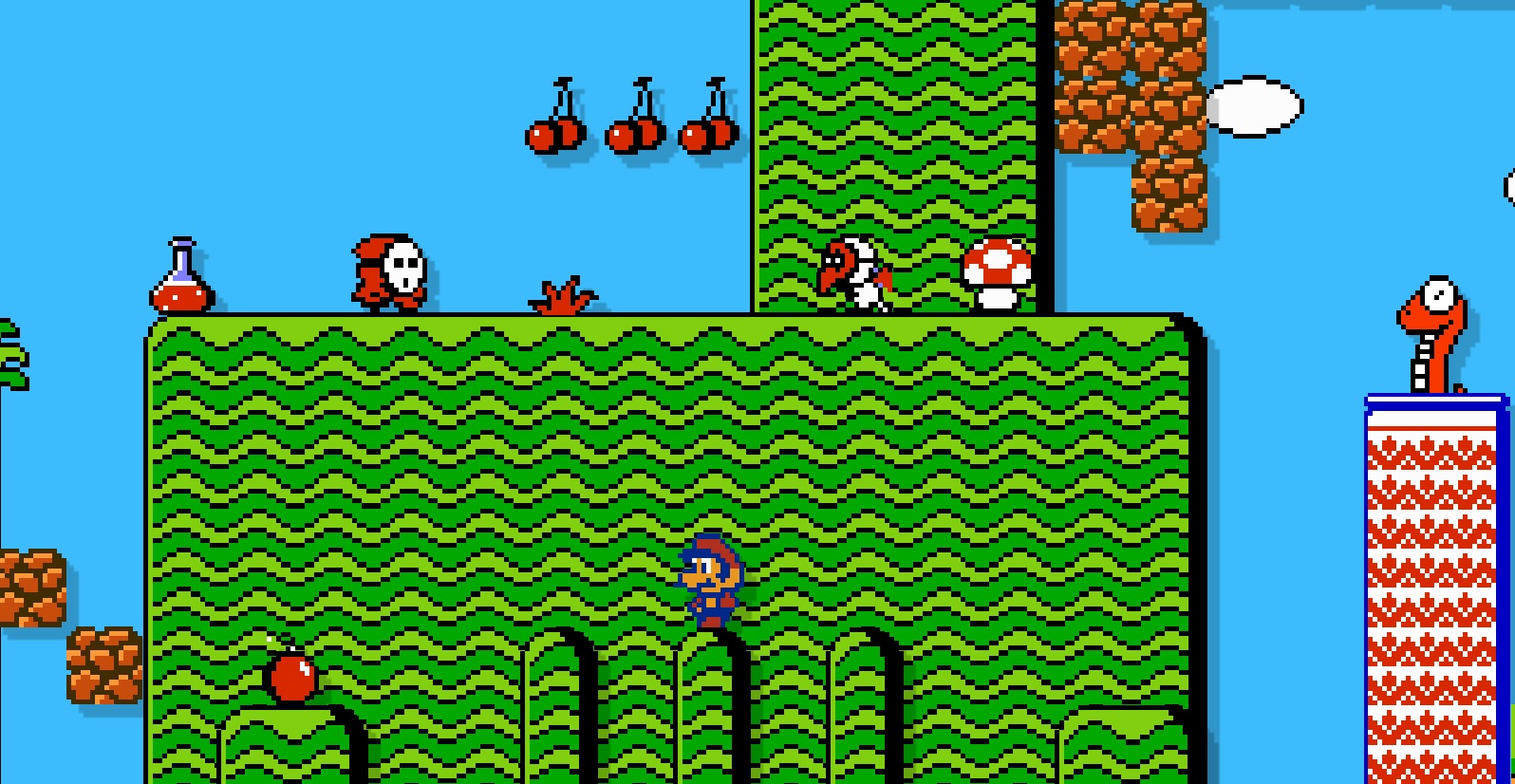Share
Transforming a franchise
Final Fantasy VI was a game that developed in an entirely different atmosphere than its predecessors. For one thing, it had a budget relatively larger than Square had been able to devote to a mainline Final Fantasy, a trend that would, of course, continue upward. It also broke from the conventional party system and cast that the series and many JRPGs of the time were quite firmly founded on. Rather than have a small group of core characters, Final Fantasy VI had the ambitious goal of creating a vast ensemble of different stories and voices with no clear protagonist, a vision that the game carries faithfully during its continuity.
Final Fantasy VI felt tonally different for a reason. Though series must-haves and veterans of art and music Yoshitaka Amano and Nobuo Uematsu would return to leave their defining mark, others would leave or change position to let other younger and ambitious Square staffers try their hand. VI would be the first to be directed by someone other than producer and series creator Hironobu Sakaguchi. Instead, the role was filled by Yoshinori Kitase and Hiroyuki Ito, who shared a unique vision for what a Final Fantasy game could look like. And for this new cast of Square underdogs and new hires to make the defining and extraordinary game they wanted to make, they needed a lot of characters. They also needed them to be interesting enough to be the protagonist in a game with no clear main character.
The concept of a gambler

Fortunately, the team had more than enough ideas to make a strong and deeply memorable cast. There were also unused concepts from Final Fantasy V, which had a relatively smaller cast of characters, as was the thing of the time. It was the job system from V that had left an exciting plethora of concepts and designs that could be reworked from being a character class to full characters unto themselves.
One of the scrapped but unique jobs from the game was going to be a gambler. Though the concept never made its way into the job list of Final Fantasy V, it would become a staple of the series after its introduction in VI. Cait Sith, Selphie, and Wakka would all become mainline characters that either tonally or mechanically used the gambler’s attack system, a slot system of random attacks. The player gambled on the exact detail and nature of the character’s attack, often in the form of an actual spinning on-screen slot machine. Setzer Gabbiani would become the template for future classes and the greater design of character concepts that would gradually reveal itself over the next few games. He was the original rogue gambler.
A history of dangerous freedom

Setzer’s concept was based initially on the Bakuto. Bakuto (博徒) were itinerant gamblers active in Feudal Japan. They were one of the forerunners to current Japan’s current organized crime organizations, the yakuza. Setzer’s inspiration can be seen in the Bakuto in two distinct ways. One of them being that by the societal norms of Japan during the Sengoku period of feudal Japan, Bakuto were considered outsiders and outcasts. Their homes and gambling operations existed on the roads outside of towns and cities. This is where they peddled dice games and lived, taking odd jobs and, in general, refusing to conform to the expectations of the world around them. Amongst being a famous gambler and an eminent personality, Setzer was also the independent owner of one of the very few airships in existence in the world at the time. While the majority of the airships in VI’s world were under direct imperial militia control, there were few that were independently owned, and the ones that existed were highly coveted. Setzer used his airship, The Blackjack, to gamble in the sky and blaze a trail of his illustrious persona. Truly a man with little care for the expectations and shadowing encroaching war of the world around him (much like the atmosphere of the Sengoku era.) For all intents and purposes, Setzer personified the free spirit of his airship.
The second way that he is based on the Bakuto is a bit more subtle, in my opinion. His design and clothing contrast with those around them in a way that’s often commented on by other characters. Setzer is a fashion icon in clear opposition to the status quo that he sees around him. Despite this independence and often vanity, his face is covered in errant scars that speak to a life lived on the edge of danger. These scars were not just an aesthetic choice but one that showed that he was not handed his life of freedom and was certainly not above dying for it. This is a nod not just to the character’s choices but likely to the historical context of the Bakuto and their coming place in the wars that were on Japan’s horizon at the time. Much like the Bakuto, Setzer had no interest in the imperial war thrust upon him by his newfound friends but, his role to play would be one of the most crucial. And despite all his loves, fashion, high society, and the finer things in life, the thing Setzer prized above anything was freedom.
The original setzer
One of the things I find to be the most interesting about Setzer’s character in the game isn’t actually that obvious in the VI’s American release. As is the case with most of Square’s games of the era (love it or hate it), the translation changes a lot of the text’s nuance. For the purposes of this article and because I think it’s the most truthful representation of the character, it’s the original version of Setzer that I want to talk about. Now, don’t get me wrong, I love many of Square’s games’ early translations; without them, we wouldn’t have the gems of most of the odder moments and exchanges that made the early franchise so endearing to many of us. But I absolutely think that in this case, it was the original version of Setzer that is his most genuine self.
Setzer was a much more fatalistic character. While freedom was his ultimate ideal, he believed that his decisions were cosmically decided in the grand scheme of his own life and world. Thus, when he threw his lot in with the rebellion group The Returners, he did so believing that destiny had always chosen him to do so.
Setzer’s character echoed old themes of Japanese history along with the western archetypes of a fantasy hero, neatly packaged into one of the very few critical path characters in Final Fantasy VI. The game succeeds incredibly in creating characters that are compelling and often impossible not to love. Each one is interesting enough to be the protagonist of their own story and yet, as is often the game’s point, ultimately inhabits a role you wouldn’t expect. Setzer follows a full character arc even compared to other games in the series, starting as a free-spirited hero with no allegiances and ultimately becoming a kind-hearted protector of his friends. A man that puts everything on the line not just because he thinks it’s his destiny but because he really cares and knows all too well the fear of failing those you care for.

Final Fantasy VI is a game I keep returning to play. Not just for its plot. Not just for its unparalleled soundtrack. The thing that keeps drawing me back to one of the most critical RPGs is the characters. Each one of them a careful work of love by writers with something to prove, something new to showcase in a genre of games that is only shortly to explode into an era of countlessly golden games.
I could and perhaps will one day write a profile on every member of the Final Fantasy VI cast. Much like Setzer, I will ignore the conventions and constraints of society. I will not be bogged down with questions of what makes a good article or what do people actually want to read. No, much like my favorite blackjack dealing airship flying rogue, my destiny is ultimately my own. And I will use it to talk about Final Fantasy VI until I have a crowd of listeners or no friends.




